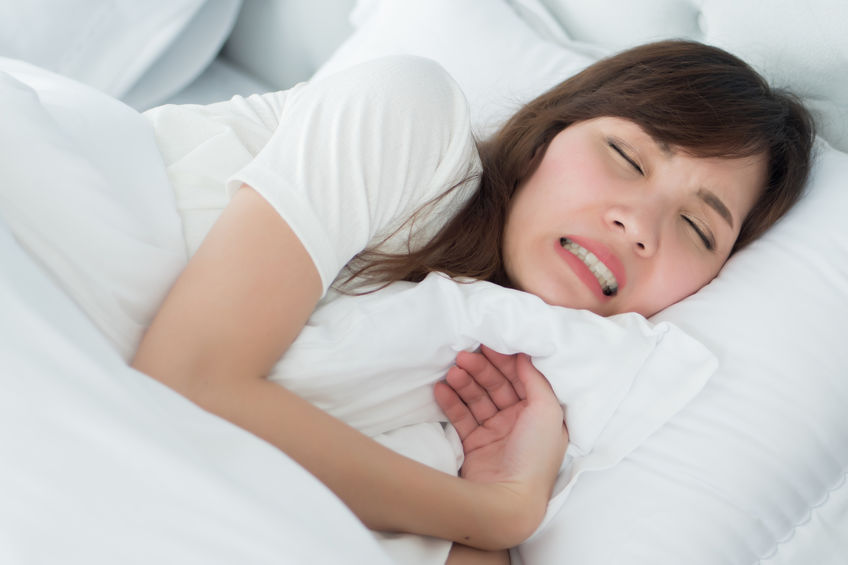Bruxism is commonly considered to be causally related to deviations in dental occlusion and articulation. Therefore its treatment was focused on reshaping the bite to achieve an occlusion and articulation free of deviations and interferences. Because bruxism management efforts are not always effective, the current evidence supporting a link between bruxism and the bite was reviewed.
A search of PubMed identified 93 English-language articles, of which 46 were deemed acceptable for the current study. These papers tended to fall into two categories: dealing with possible associations between bruxism and aspects of occlusion or dealing with the possible mediating role of occlusion between bruxism and its consequences, which includes tooth wear, loss of periodontal tissues, and temporomandibular dysfunction.
With respect to interactions between bruxism and the bite, no evidence supports occlusal interferences playing a role in causing bruxism. Studies indicate a growing awareness that other factors, including psychosocial and behavioral aspects, play an important role in the etiology of bruxism.

Considering studies focused on the bite mediating between bruxism and its consequences, no evidence exists for such a role. Among the aspects of tooth wear that have been studied are attrition, which is the mechanical wear resulting from mastication or parafunction on contacting surfaces of the tooth, and abfraction, which is cervical tooth wear in the shape of a V.
Attrition occurs with tooth grinding and clenching. However, abfraction is a controversial topic, with some considering it a hypothetical phenomenon only. No unequivocal evidence supports periodontal breakdown as a result of bruxism. In addition, the few papers that have explored the mediating role of occlusion in a causal relationship between bruxism and temporomandibular disorders have produced negative or poorly understood outcomes.
The evidence indicates growing agreement that it is not how the occlusion appears but how one copes with certain types of occlusion that leads to bruxism.
Clinical Significance
Dental professionals and bruxing patients tend to blame occlusal factors for causing bruxism. However, the evidence does not support this position. Rather than continue to act on this assumption, further research should investigate other possibilities to gather the evidence needed to guide clinical practice.
Cost-Effective Treatment for Burning Mouth Syndrome
Burning mouth syndrome (BMS) is characterized by burning pain in the tongue or oral mucous membranes usually in the absence of any pertinent clinical or laboratory findings. Among the complaints of BMS, patients are burning, dryness, and taste alterations. Patients are often referred from one healthcare professional to another without obtaining effective management.
Among the treatments are antidepressants, analgesics, benzodiazepines, capsaicin, hormone replacement therapy, hypericum extract, vitamin complexes, cognitive behavioral therapy, and electroconvulsive therapy. These have demonstrated various degrees of effectiveness and are accompanied by various adverse events. BMS is associated with a significant social and financial burden, but the cost-effectiveness of the various therapies has been unclear.
A cost-effectiveness analysis was conducted from the perspective of a health care payer for amisulpride, paroxetine, sertraline, and topical clonazepam used to treat BMS. A decision tree model incorporating direct health care costs and probabilities associated with possible events and outcomes was used for the analysis.

Average cost-effectiveness and incremental cost-effectiveness ratios were calculated. The costs of brand name and generic drugs in five European countries—France, Italy, the Netherlands, Spain, and the United Kingdom—were studied using sensitivity analysis to determine the robustness of the cost-effectiveness results.
Topical clonazepam was the most effective agent and the most efficient BMS therapy in all five countries. Generic forms of the drugs were generally more efficient in terms of cost-effectiveness than their brand-name forms except for amisulpride in France, where the generic and brand-name forms had the same average cost-effectiveness ratio (ACER).
Drugs proved most cost-effective in the Netherlands (except for amisulpride, which is not marketed there) and least cost-effective in the United Kingdom. Sensitivity analysis also found topical clonazepam to be the most efficient therapy.
Discussion
In patients with BMS, normal social relationships and quality of life are disrupted. Topical clonazepam proved to be a more efficient therapy for BMS than both generic and brand-name versions of amisulpride, paroxetine, and sertraline.
Our mission
It is the mission of this office to provide our patients with the highest level of excellence in oral health care.
Our team is thoroughly committed to excellence for our patients; you’ll be treated with dignity and respect in a trusting, open, honest environment and the confidential nature of your personal information will be recognized and respected.
Decisions are made with our patients on the basis of consensus, valuing diversity of opinion, in an environment that fosters mutual respect.

